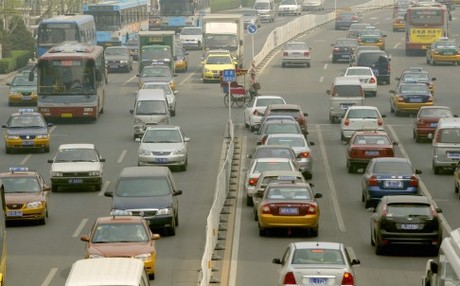Philippine Growth Misses Forecast as Risks Loom

The Philippine economy grew slower than expected in the third quarter, as risks from a leadership change next year and the El Nino dry spell loomed, the government said Thursday.
The slowdown comes after years of sustained growth in the Philippines, formerly known as the "Sick Man" of Asia because of its poor economic performance.
Gross domestic product (GDP) expanded by 6.0 percent in the July to September period, faster than 5.8 in the previous quarter but below the 6.3-percent median expectation of economists in a Bloomberg News poll, as a slowdown in manufacturing weighed on growth in services and public spending.
"Clearly, the outcome of the national election will have an impact on the economy," economic planning secretary Arsenio Balisacan told reporters.
"We are hoping that whoever will get elected will speed up and sustain the reforms so we can raise the potential of the economy," he said.
President Benigno Aquino, who led an economic revival in the country, will end his single six-year term in June next year.
His preferred successor, former interior minister Manuel Roxas, has languished in opinion polls.
The economy could grow as much as 6.9 percent in the fourth quarter, bringing the full-year average to at least 6.0 percent due to a boost in consumption during Christmas, Balisacan said.
The Philippines has the potential to grow by as much as 8.0 percent next year, he said, but Aquino's successor needs to address festering problems such as the country's decaying infrastructure.
The El Nino dry spell, projected to peak in December and January, has begun to hurt agriculture which was down 1.1 percent quarter-on-quarter, data showed.
Balisacan said this was due to inadequate irrigation of farmlands and that government was addressing the problem.
The services sector was the main growth driver in the third quarter, growing 7.3 percent -- the highest in two years -- from 5.6 percent last year.
Year-on-year, industry growth slowed to 5.4 percent from 7.8 percent, while agriculture declined 0.4 percent from a 2.6-percent contraction.
Analysts said strong private consumption and government spending would drive future growth, but would be tempered by weak exports.
"In our view, the key risks to growth continue to stem from weaker external demand and adverse weather conditions, though inflation has remained manageable," Barclays analyst Rahul Bajoria said.
Credit Suisse analyst Michael Wan said the Philippines had fiscal and monetary policy space to respond to a potential regional growth slowdown given its lesser exposure to China compared to its neighbours.
Wan hailed the country for strong overall performance, including a boost in consumption and a pick up in spending.
"The Philippines remains one of the best macro stories in the region," Wan said.



